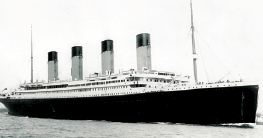After an incident or accident there seems to be no end to the people willing to step up and offer an opinion on just where exactly things went wrong. Engineers have a relentless desire to understand things better and I regularly tell my staff that it is smart to learn from your mistakes, but smarter to learn from someone else’s.
This can be healthy but can also create problems; particularly in our litigation-rich environment.
When the incident or accident has happened it usually is, on the face of it, caused by human error at the time of the accident. Oftentimes, there needs to have been multiple errors before the disaster can occur, but these should not be viewed as independent chance events. If one mistake creates the circumstances for another, and goes uncorrected, then it is really only a matter of time before the next domino falls, and so it continues until the tragedy is complete.
Consider for example a fatal accident that occurred about fifteen years ago. A mechanic was tasked with draining oil from the shell side of a refrigerant-cooled
oil cooler on an ammonia cold store plant. The drain point on the bottom of the shell & tube oil cooler had a capped shut-off valve but no spring-loaded safety valve,
despite the fact that these had been required by code in the jurisdiction for many years.
The justification for the omission was that this was not a point from which
oil was usually drained. There were shut-off valves in the refrigerant liquid pipe leading down from the high pressure receiver and the gas pipe leading back there but while the valve in the gas pipe was at floor level the one in the liquid line was 20 ft (6 m) in the air with no way of accessing it. The longest ladder on site was apparently only 10 ft (3 m) and this had been the situation for many years. There was no ammonia alarm system in the machinery room and not much ventilation. The mechanic connected a hose to the shut-off valve and ran it into a barrel. He removed the seal cap, opened the shut-off valve with an adjustable wrench, checked that oil was slowly flowing to the barrel and then left the room to attend to other duties.
When he returned a few minutes later, the slow flow of oil had finished and was replaced by a high velocity jet of much less viscous ammonia. This had blown the hose out of the barrel and the contents of the high pressure receiver were being emptied onto the floor. Of course, the hose had not been tied to the barrel. The mechanic entered the room without any face mask or other respiratory protection. The ammonia content in the air at head level was apparently low enough to be tolerable, but when he bent down to close the shut-off valve with his adjustable wrench he inhaled the much higher concentration at floor level and keeled over.
Could the designer have done better?
Clearly, the mechanic carried a lot of responsibility for his mistakes but with more foresight he would never have been put in that position in the first place. The designer should have specified that the drain point would be fitted with a spring-loaded valve and should also have ensured that the liquid line valve was in an accessible location. The installation crew should not have been permitted to put that valve in a place convenient to them but of no use in practice—it was probably installed when the whole room was scaffolded, hence its unreachable location. Recognizing the previous failings, site management should have ensured that suitable access was provided, either by insisting the valve was relocated, or by providing a permanent access
platform or at the very least by buying a ladder that was long enough to reach. Finally, rather than tasking the mechanic with oil draining on his own while also fulfilling other duties, he should have been given assistance and a clear schedule to ensure that the oil drain was never left unattended.
Download the full article as it appears in the ASHRAE Journal here:
This article was published in ASHRAE Journal, June 2019. Copyright 2019 ASHRAE. Reprinted here by permission from ASHRAE at www. star-ref.co.uk. This article may not be copied nor distributed in either paper or digital form by other parties without ASHRAE’s permission. For more information about ASHRAE, visit http://www.ashrae.org.

